2019 winter irrigated soybean on cracking clay at Home Hill
Grower: James Ware
Locality of the crop: Home Hill
Farming system: Irrigated grain and sugarcane production system. Legumes (soybean & mungbean) are grown in rotation with sorghum, corn and millet.
Monitored area: 40.3 ha.
Soil type: Main soil type is a cracking clay soil with smaller areas of loam over sodic clay.
Pre-plant actions:
- Fallow sprays (glyphosate and 2,4-D)
- Bed formed for irrigation/planting operations post fertiliser application from previous soil test.
- Previous crops were soybeans in the 2018 June/July planting window then grain sorghum and now back to soybean.
Planting
Variety: Hayman. Planted 28 June 2019.
Sowing method: Maxemerge disc planter.
Sowing rate: 70 kg/ha at 50 mm depth into dry soil and watered up.
Inoculant: Easy Rhiz soybean Group H inoculant + Regent (fipronil insecticide), water injection.
Nutrition: Pre-plant application of nitrogen, phosphorus, potassium, sulphur and zinc.
Post-plant weed control
Herbicides: Verdict and Blazer applied at V2/3 growth stage (two or three sets of unfolded trifoliolate leaves).
Week 7
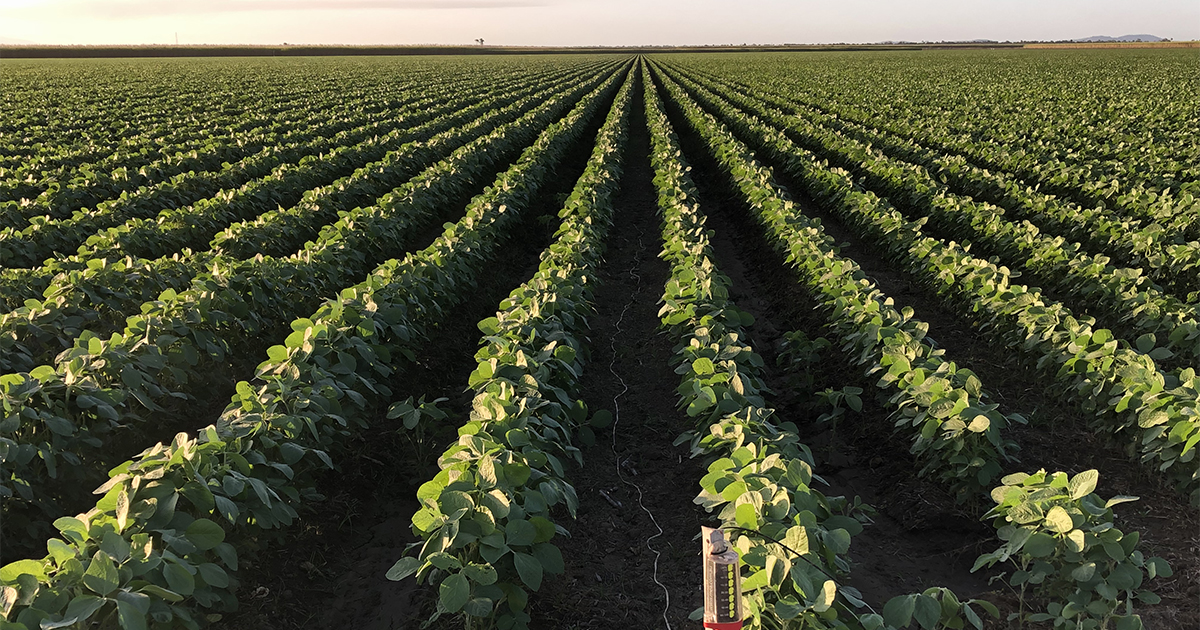
- Second in-crop irrigation was applied.
- No insecticide sprays as yet.
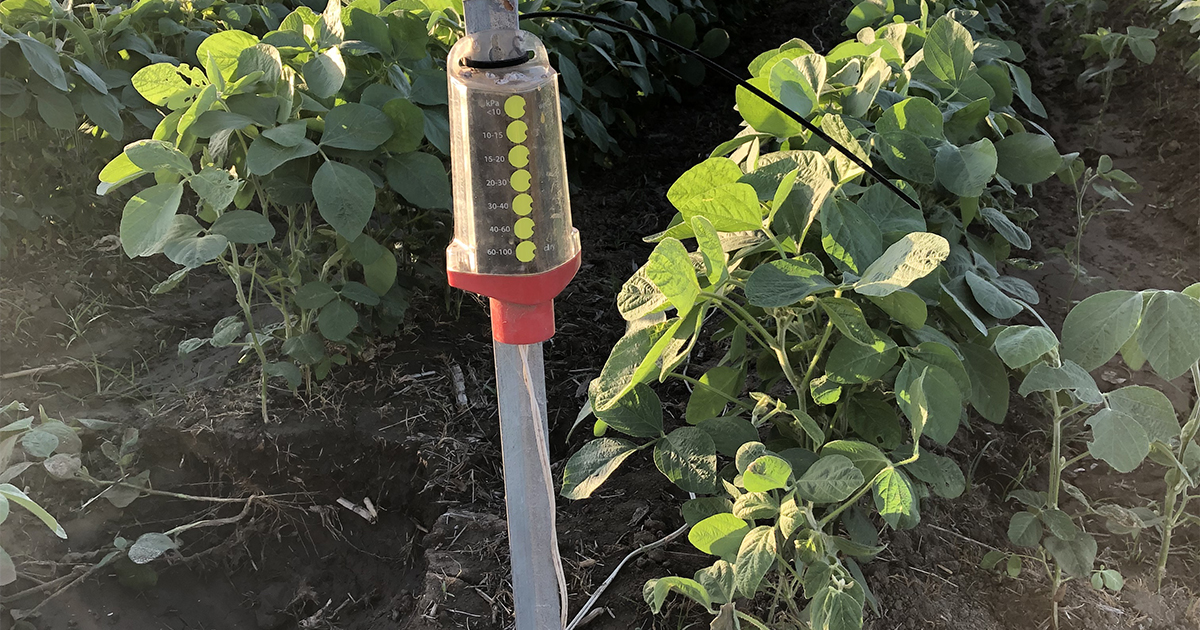 A GDOT sensor used to schedule irrigations.
A GDOT sensor used to schedule irrigations.
Week 8
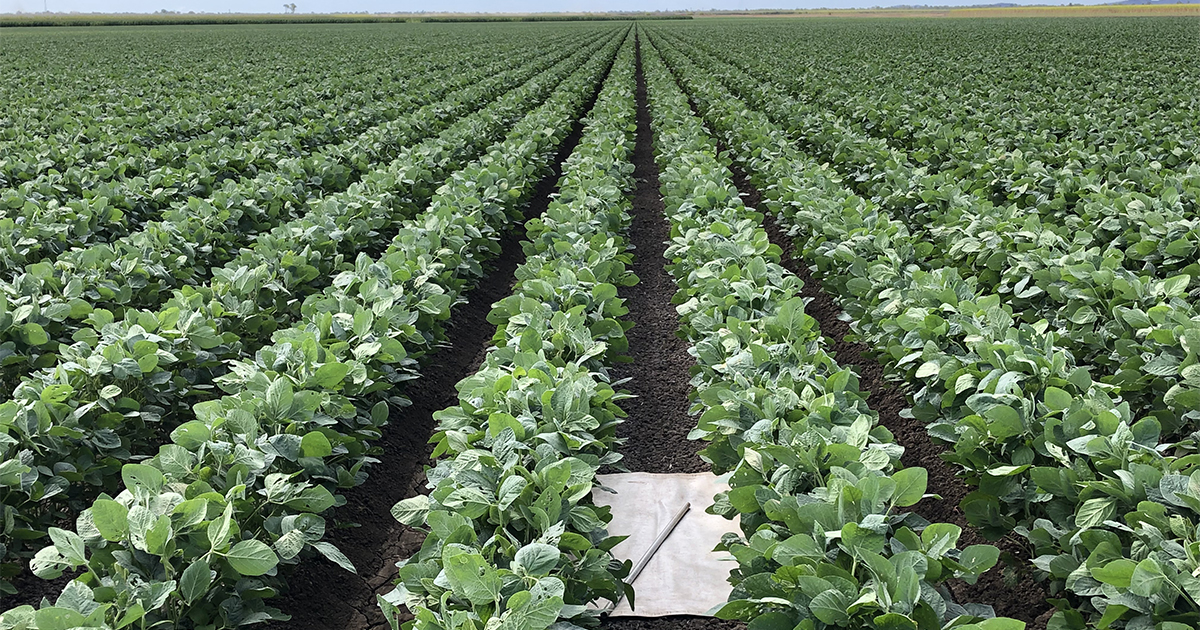
Management notes:
- Crop is healthy and growing well.
- First flowers have appeared.
- Heliothis activity spiked, which resulted in an application of Altacor.
- Low levels of Redbanded Shield bug are also present in the crop.
- Third in-crop irrigation was completed. Based on information from the GDOT, irrigation frequency is now escalated to weekly.
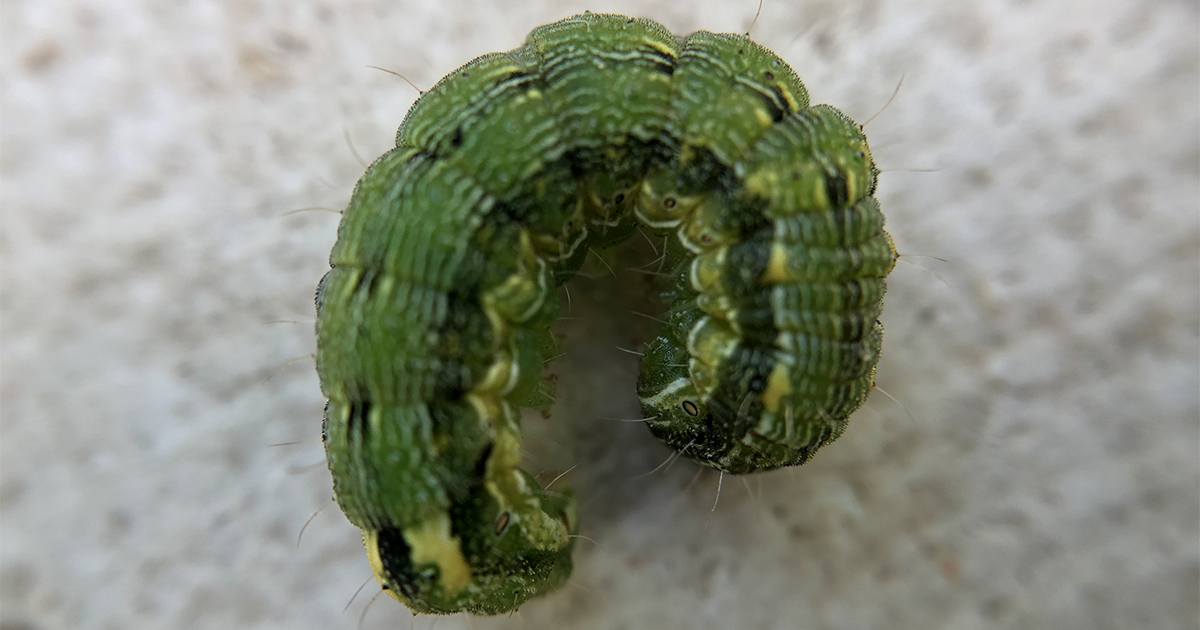 Heliothis activity has required control measures. Follow the resistance management guide to extend the life of available chemistry.
Heliothis activity has required control measures. Follow the resistance management guide to extend the life of available chemistry.
Week 9
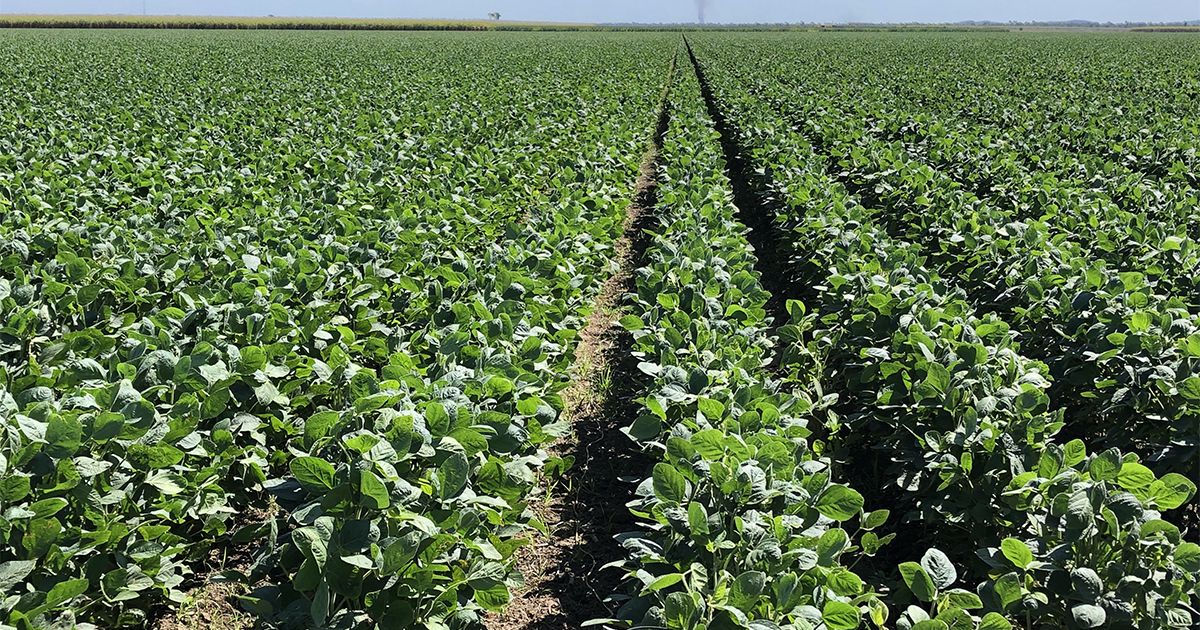
Management notes:
- Crop is green, healthy and growing well with the advent of warmer temperatures.
- Downy mildew is evident throughout the canopy, however control with a fungicide is not warranted.
- A small population of Redbanded shield bugs have been observed during both crop inspections this week. Numbers are currently under threshold and will be monitored closely.
- Heliothis, armyworm & looper activity are practically non-existent since the Altacor application last week. Foliar and terminal damage is still evident within the canopy with significant new growth occurring.
- Some late germinating vines and annual grasses are also evident but densities are extremely low and will not require or justify a herbicide application.
- Weekly 'flushing' irrigations continue to occur during this critical reproductive phase.
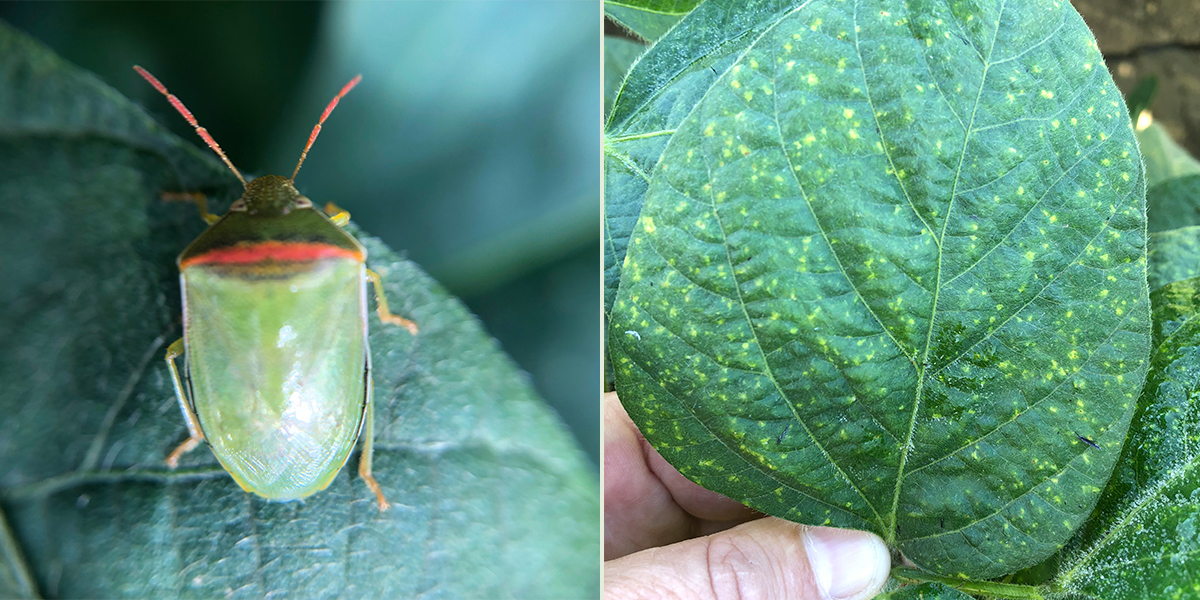 Left: Redbanded shield bug. Right: Downy mildew.
Left: Redbanded shield bug. Right: Downy mildew.
Week 10
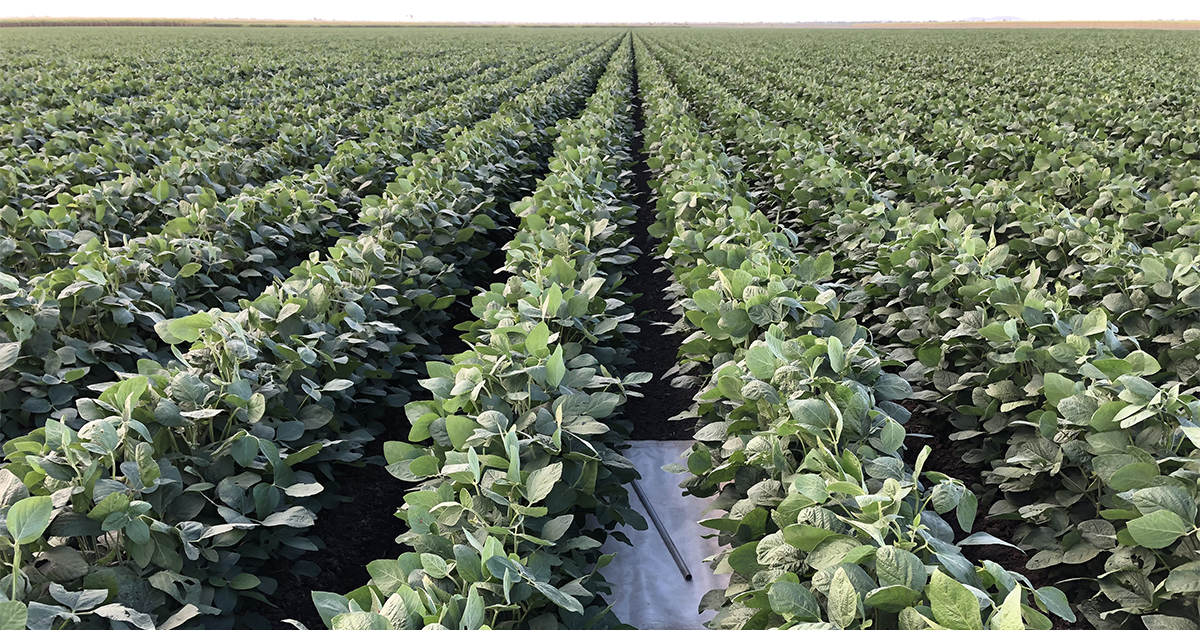
Management notes:
- Crop is flowering and podding well.
- Insect pressure remains low, however an adult Lucerne crownborer was found during inspections. No obvious signs of larvae damage from Lucerne crownborer activity as yet. The seed for this crop was treated with fipronil at planting.
- Irrigations are now scheduled for twice-weekly.
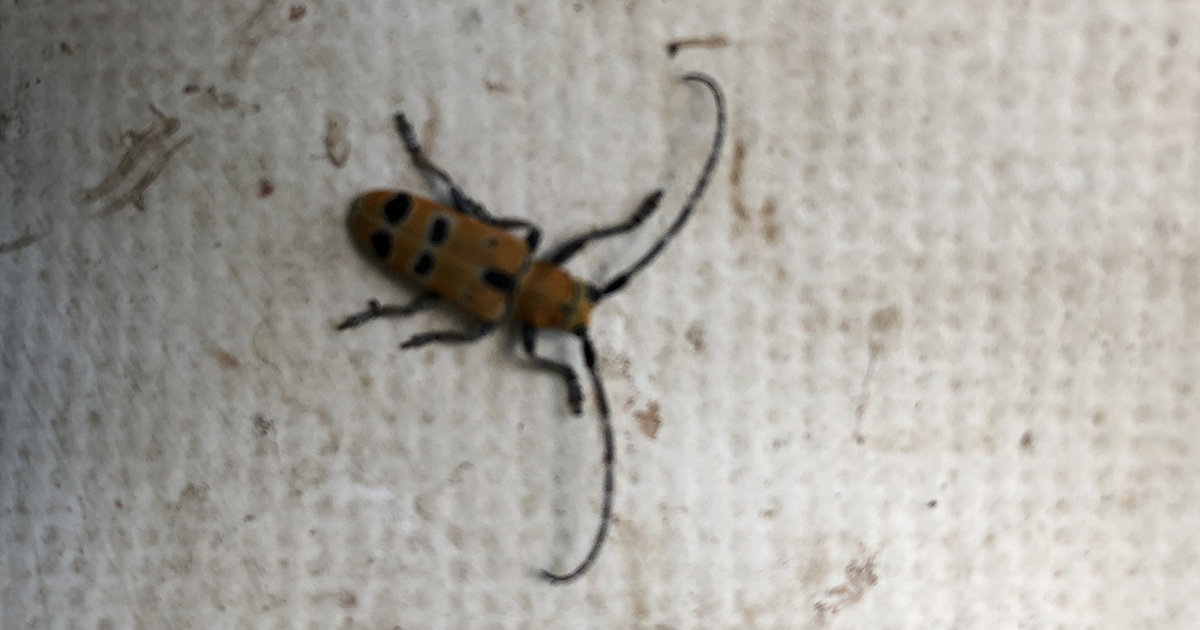 An adult lucerne crown borer was found in the crop but no larvae damage found. No in-crop insecticides are registered for crown borer.
An adult lucerne crown borer was found in the crop but no larvae damage found. No in-crop insecticides are registered for crown borer.
Week 11
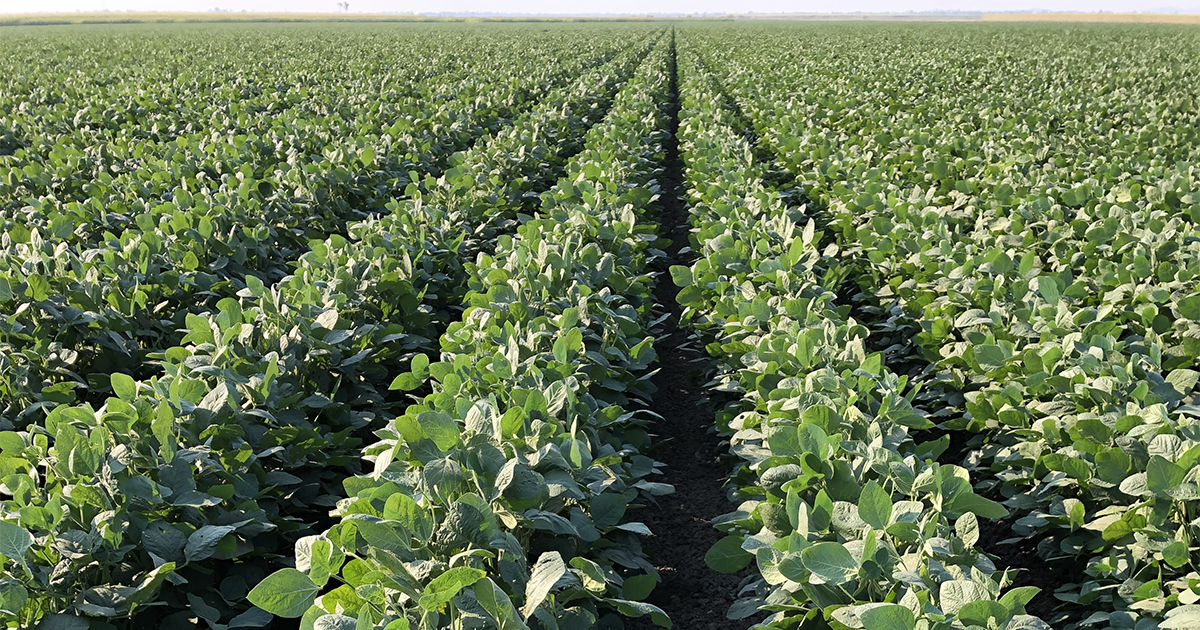
Management notes:
- Crop continues to flower with ideal growing conditions.
- Heliothis and looper numbers remain low.
- Green vegetable bug & red banded shield bugs are regularly found during checks but remain under threshold. Nymphs are starting to appear so an insecticide may not be too far off.
- Finding a lot of seed eating bugs (Graptostethus servus). The seed eating bug is potentially damaging to grain crops such as soybean, mungbean and sorghum. No thresholds exist so we will have to watch this insect closely.
- Also found a few horehound bugs (Agonoscelis rutile), which feed on the horehound plant (Marrubium vulgare) and not soybeans.
- Irrigation to continue twice weekly during flowering.
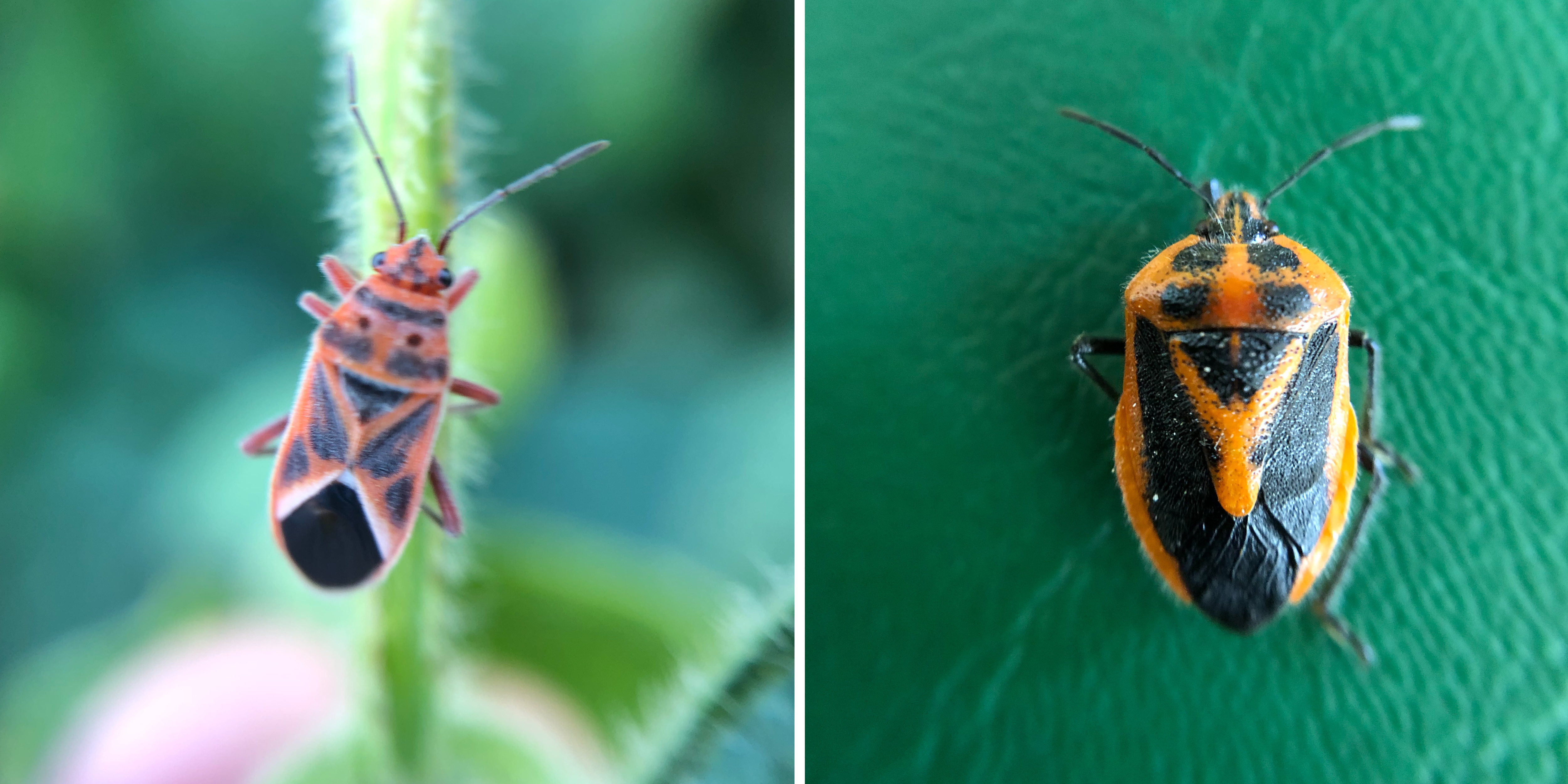 Left: Seed eating bug. Right: Horehound bug.
Left: Seed eating bug. Right: Horehound bug.
Week 12
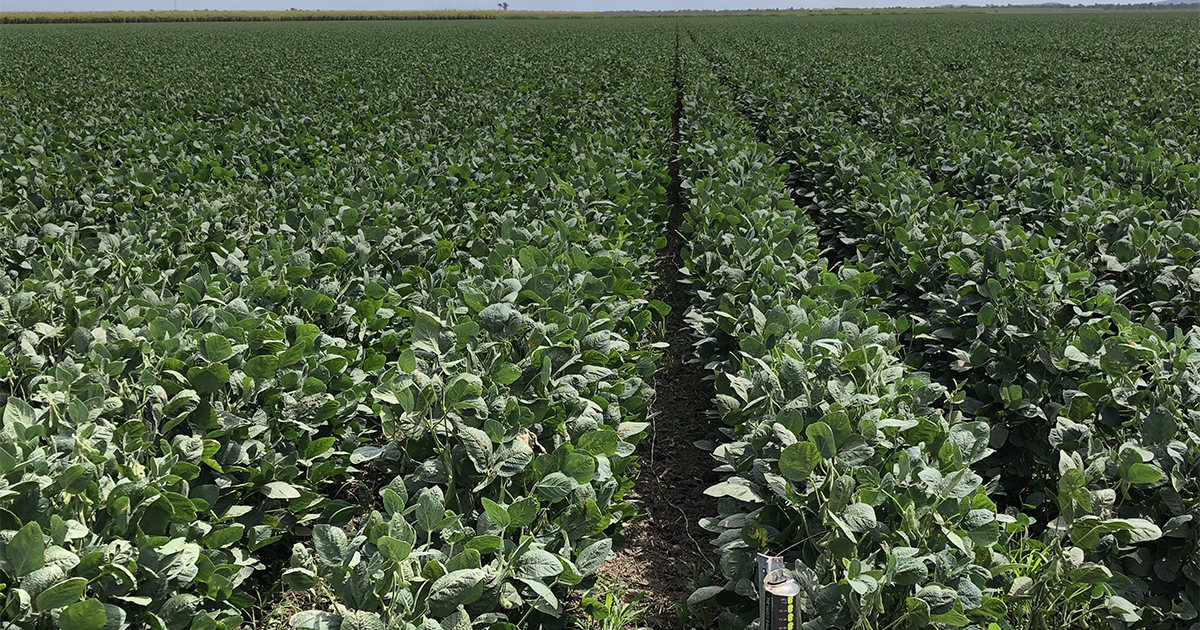 Management notes:
Management notes:
- Threshold was finally reached regarding green vegetable bug and redbanded shield bug. Sprayed crop with Shield + Maxx Surfactant + Salt 0.5%
- Heliothis and loopers numbers remain low. Soybean moth was also observed whilst crop scouting.
- Crop continues to grow well with flowering nearly finished with the focus now on pod fill.
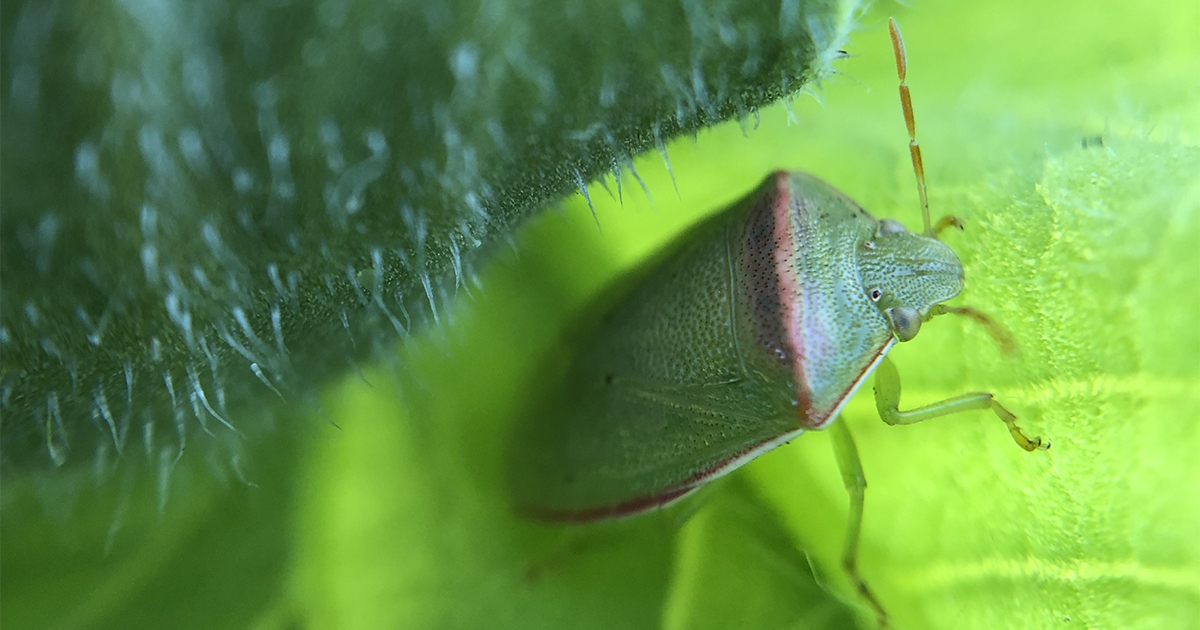 Redbanded shield bug
Redbanded shield bug
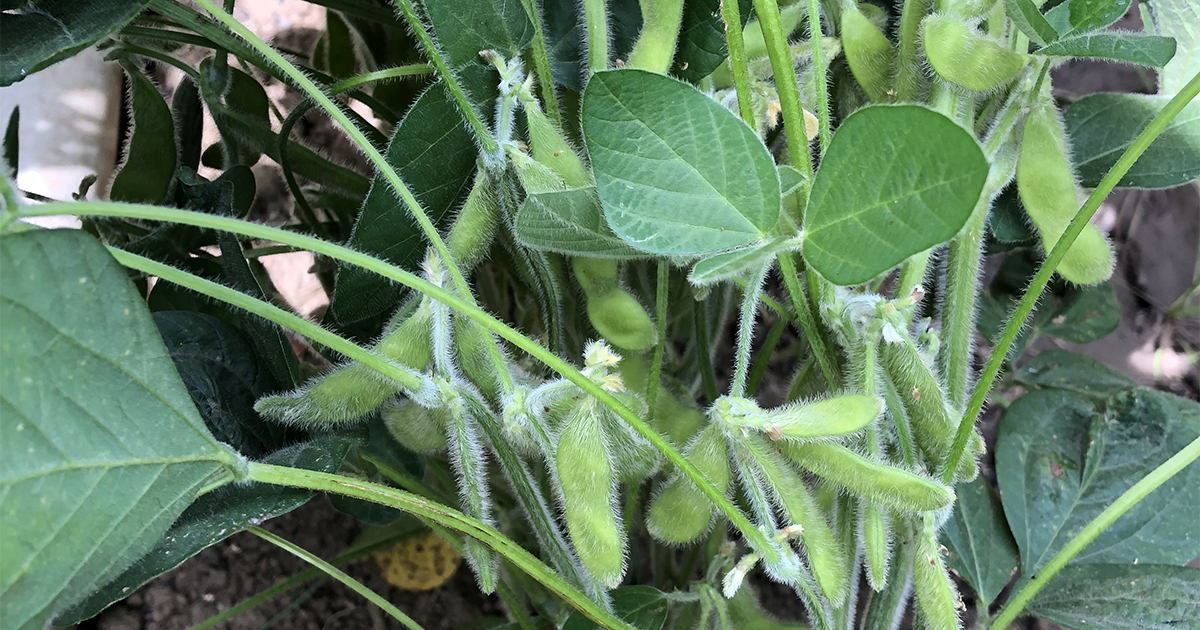 Focus is now on filling pods.
Focus is now on filling pods.
Week 13
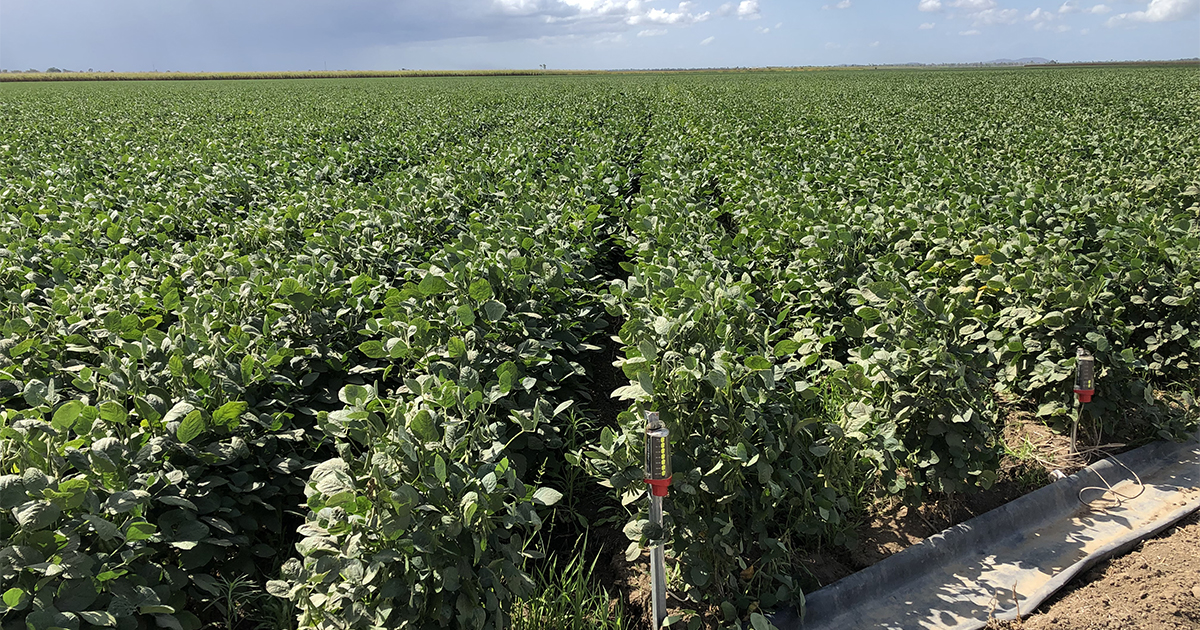 Management notes:
Management notes:
- The crop is healthy and growing well.
- Pods that have been set are now filling and coupled with warmer daily temperatures, crop water use is also increasing.
- Last week's insecticide application has worked extremely well. No green vegetable bugs or large brown bean bugs where found in subsequent checks this week. However, extremely low levels of redbanded shield bugs and a few seed eating bugs were present.
- Some pod abortion is evident – most likely due to previous green vegetable bug and redbanded shield bug activity over the last couple of weeks.
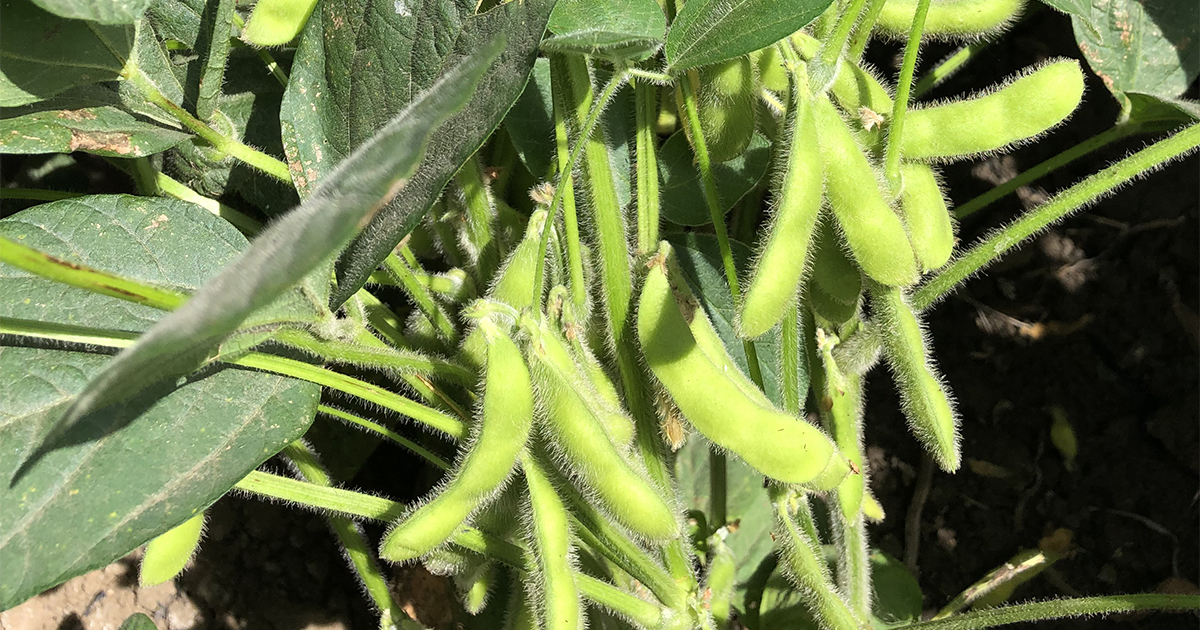 Pods filling well.
Pods filling well.
Week 14
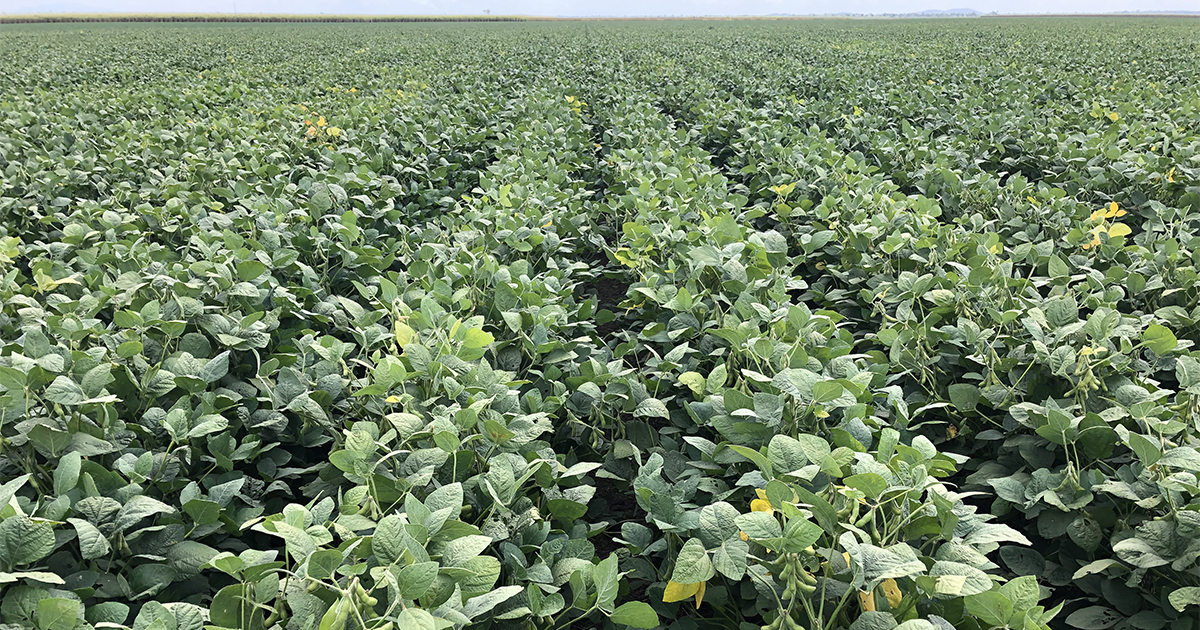 Management notes:
Management notes:
- Crop is showing signs of premature maturity/leaf senescence in some sections of the field, which is mainly soil type related.
- Insect pressure remains low with only a few red banded shield bugs found this week.
- Pods are continuing to mature nicely.
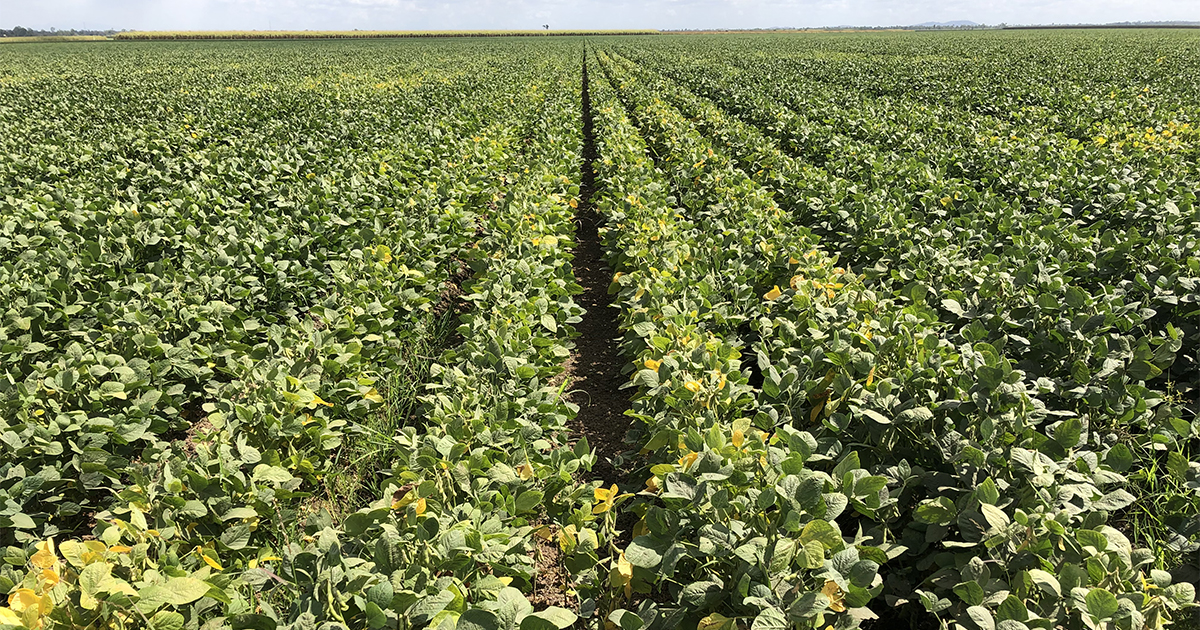 Premature maturity occuring on part of the blck in response to chnage of soil type.
Premature maturity occuring on part of the blck in response to chnage of soil type.
Week 15
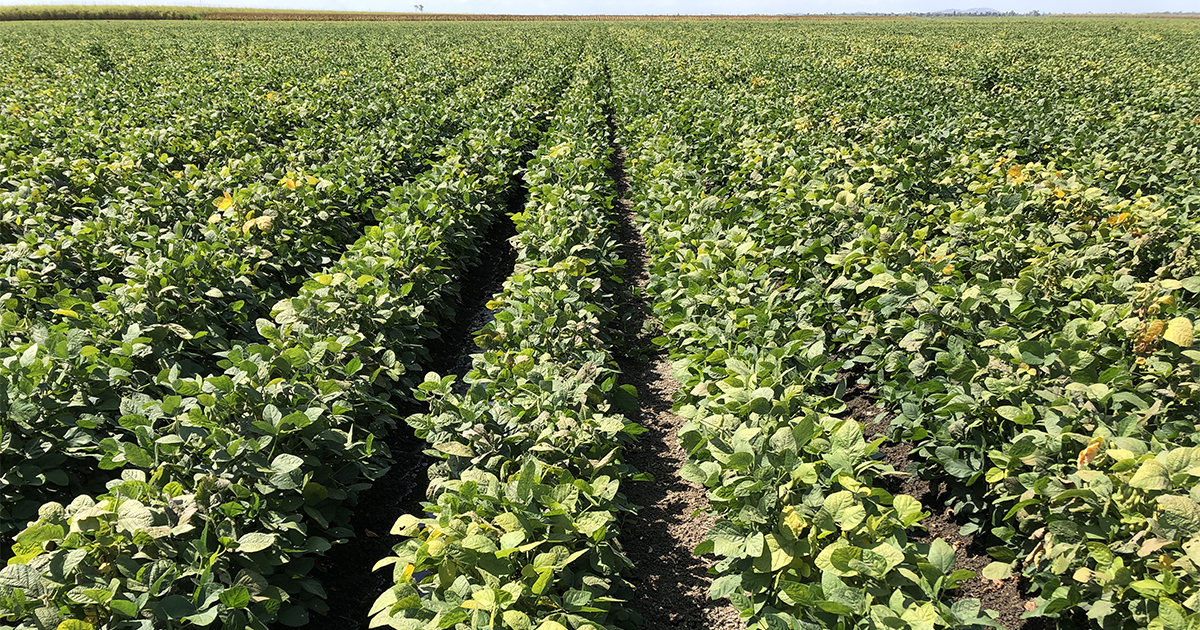
Management notes:
- The dry weather continues across the Burdekin region, therefore irrigation is still occurring on a weekly basis.
- Soybean seeds are maturing well, with the crop currently at the R6 stage.
- Insect pressure remains low with only a few red banded shield bugs found again this week.
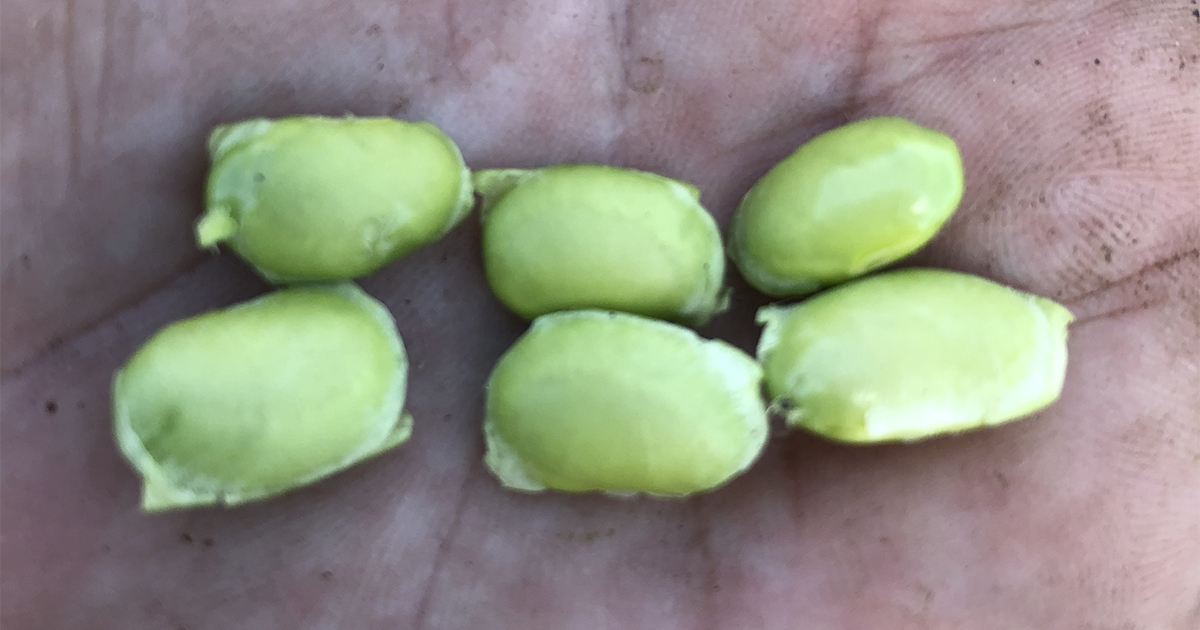 Soybean seeds developing well.
Soybean seeds developing well.
Week 16
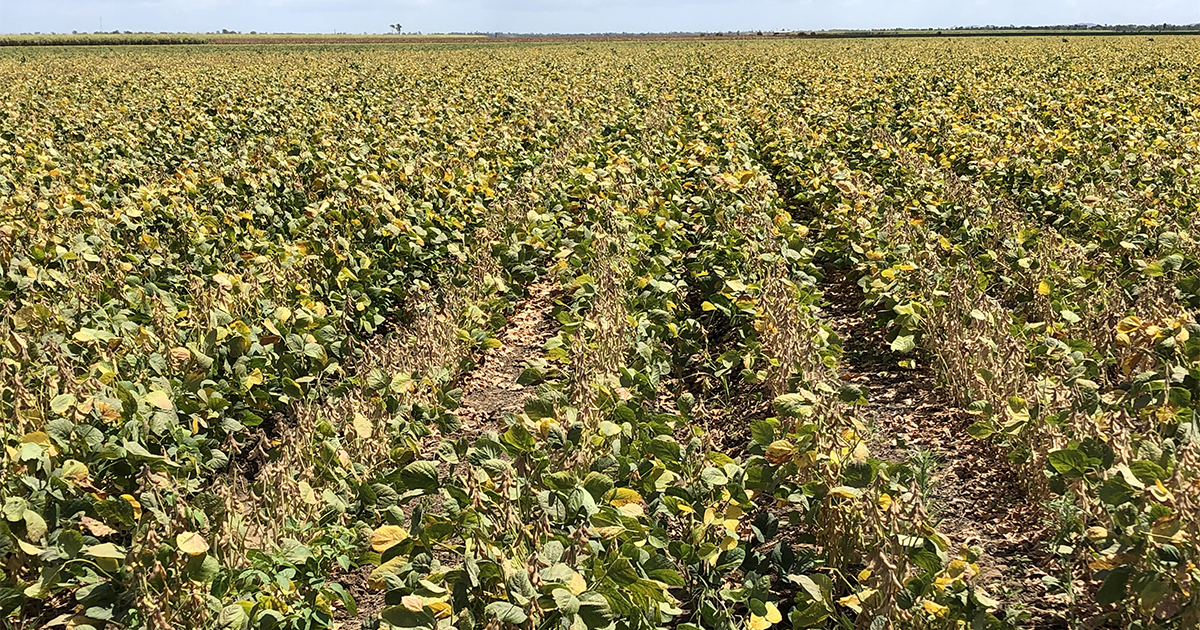
Management notes:
- Last irrigation was applied this week.
- Soybean seeds are maturing well, with the majority of the crop currently at the R7 stage. Some varying maturity is evident within the field with some areas of the crop still at the R6 stage.
- Insect pressure remains low with only a few red banded shield bugs found again this week, mostly within the green areas of the crop.
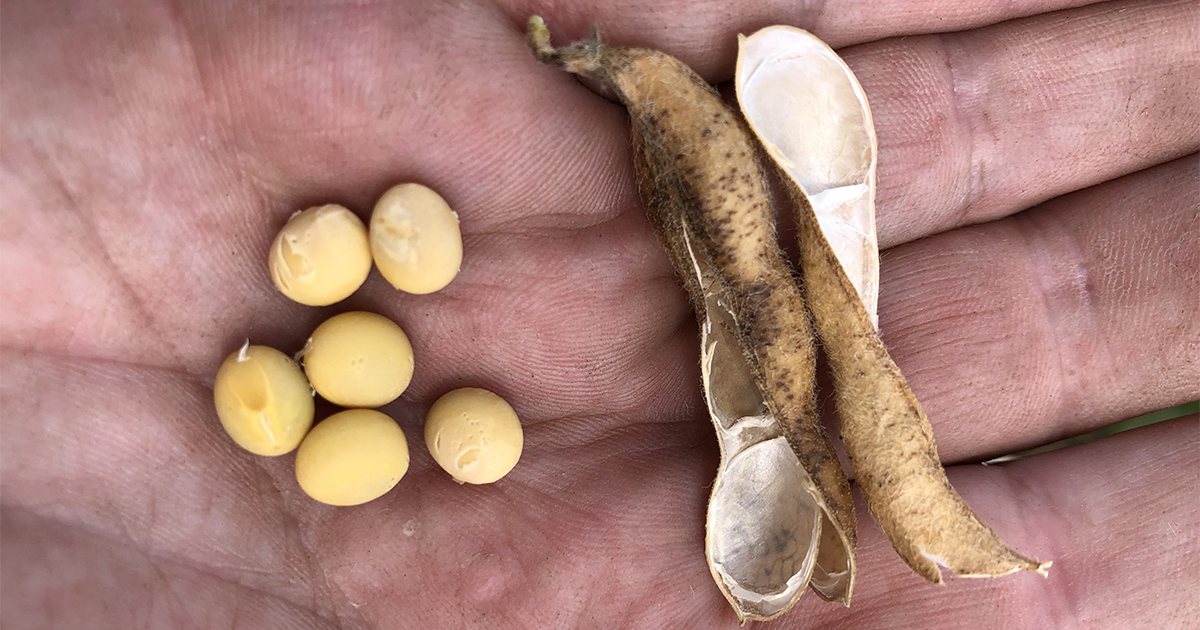
Week 17
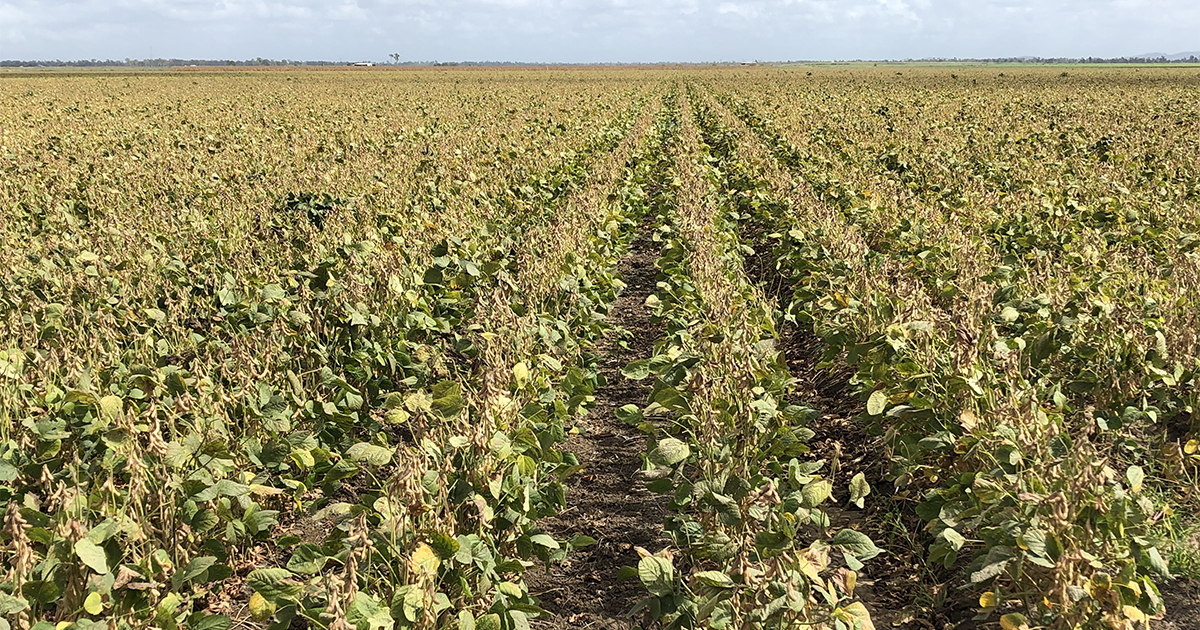
Management notes:
- The crop continues to senescence with previously green patches within the field, now showing significant yellowing of the leaves.
- Soybean seeds are maturing well, with the majority of the crop currently at the R7 to R8 growth stage.
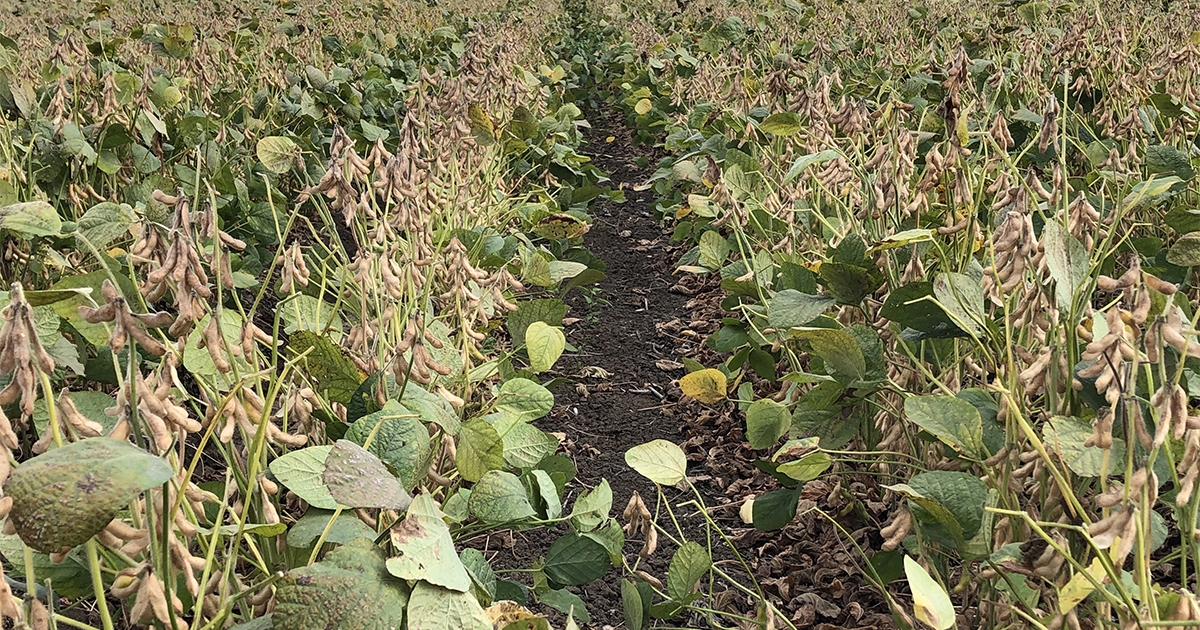 Pods are plentiful and maturing well.
Pods are plentiful and maturing well.
Week 18
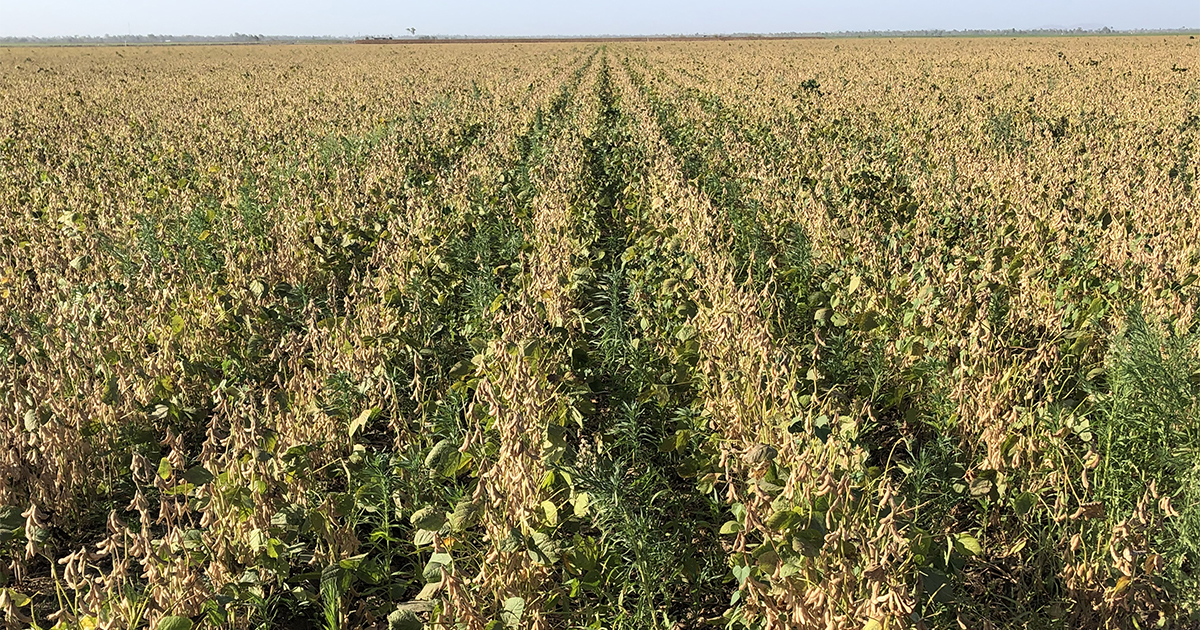 Management notes:
Management notes:
- Soybean seed has matured well, with the crop now at the R8 growth stage.
- Leaf drop has now slowed and we may need to look at desiccation options.
- Insect pressure remains very low with the odd GVB & RBSB found this week.
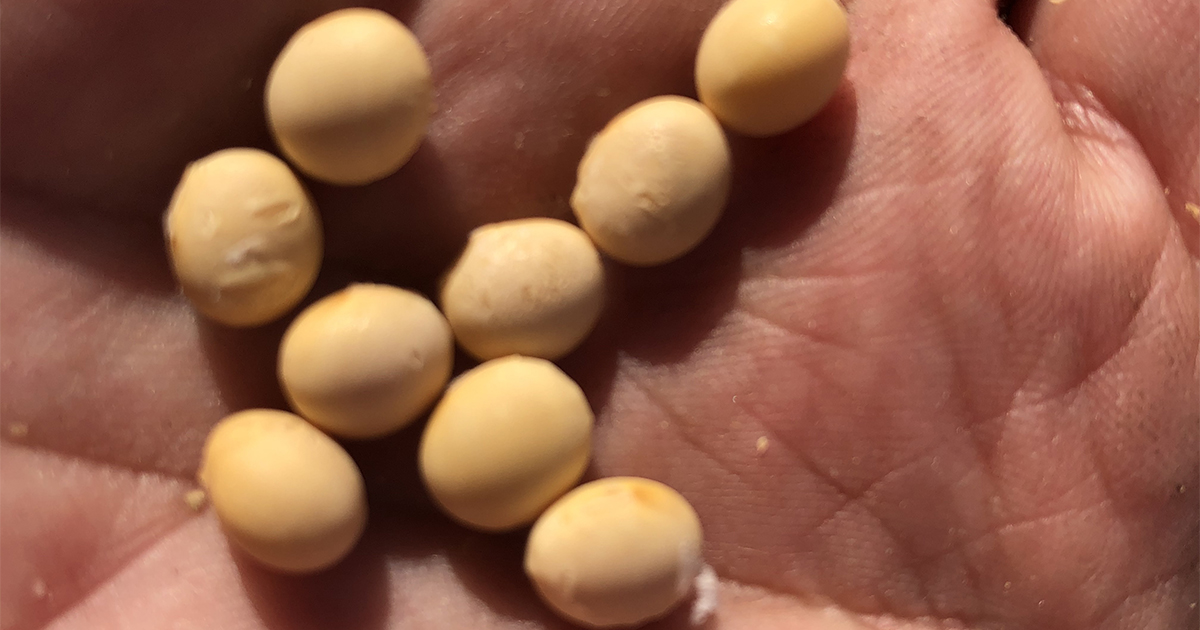 Good quality grain maturing well.
Good quality grain maturing well.
Week 19
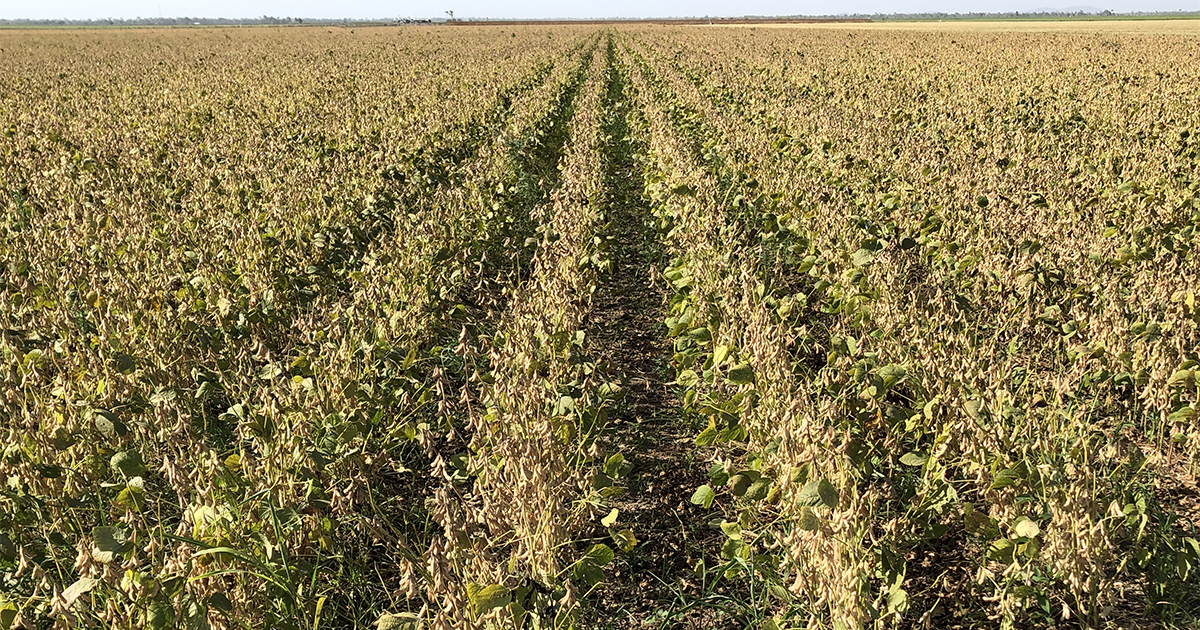
- Crop was direct harvested without using a desiccant as grain moisture levels had dropped to 9%.
- Final yield has yet to be determined, but weights obtained so far indicate a yield of around 3.5 t/ha or 3.66 t/ha (moisture corrected).
- The field is currently being ripped, bed formed, fertilised and pre irrigated in readiness for a wet season soybean crop.
 Field bins reduce the pressure on harvest logistics.
Field bins reduce the pressure on harvest logistics.
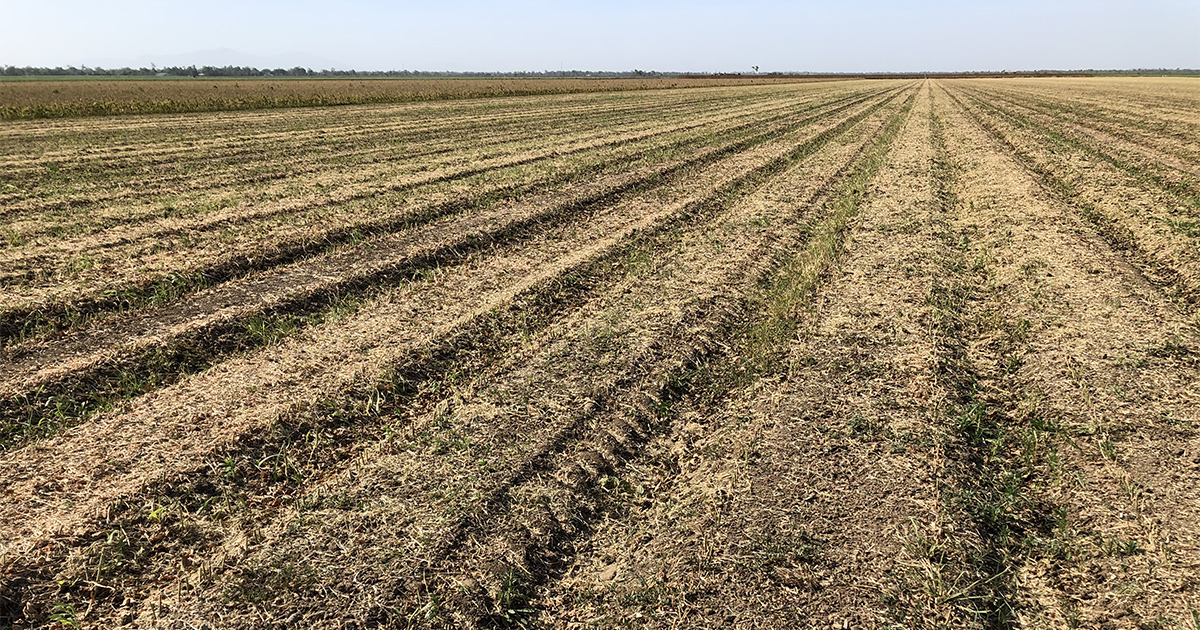 Efficient harvest begins with excellent bed preparation at the start of the season – flat, flat, flat!
Efficient harvest begins with excellent bed preparation at the start of the season – flat, flat, flat!
Read Pulse Check blog articles | Pulse Check Coastal facebook | Subscribe to the monthly newsletter

